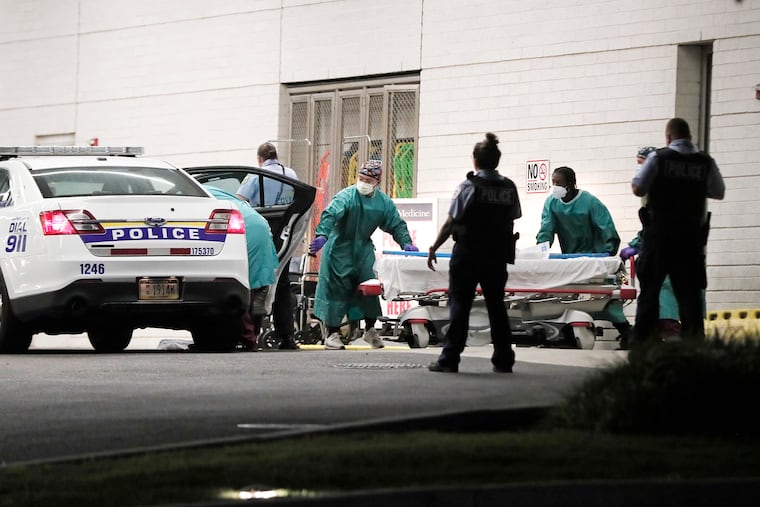A community investment approach to gun violence would save money and lives
The opposite of violence is not more force, but more opportunity.

When we were medical students rotating through Penn Presbyterian Hospital, it was common to see two teenagers each day come into the trauma bay with gunshots or stab wounds, often as young as 16 years old. Since COVID-19 began, this number has only increased.
Some victims survive and return home. For others, it is a race against time as providers try to save a fading life, in some cases resorting to physically squeezing the heart. Often, the victim dies with their still heart in a physician’s gloved hand.
To anyone walking through the trauma bay, it becomes apparent that one’s life trajectory could be altered early on. We often wonder: If their circumstances had been different, would they have been assaulted in the first place?
Violence follows a clear pattern. Across cities in the United States, including Philadelphia, neighborhoods bearing the greatest burden of violence share a common history of systematic disinvestment — a history of redlining, underfunded educational systems, and removal of health services. In these neighborhoods, violence is often a result of desperation.
Poverty coerces people to resort to extreme actions that otherwise would never be chosen. It stands to reason that the opposite of violence is not more force, but more opportunity. Local government needs to invest in our communities, especially those that have been systematically disadvantaged.
Already, there are myriad examples of community investments that successfully break cycles of violence by promoting opportunity. One such initiative is the Operation Peacemaker Fellowship in Richmond, Calif. This intensive 18-month program recruits community members who are considered highest risk for gun violence involvement. The program offers conflict-resolution strategies, mentorship, and financial support. Over a 10-year period, the Operation Peacemaker Fellowship program was associated with 55% fewer deaths and hospital visits from firearm violence. Similarly, Sacramento’s version of the program was associated with a 21% decrease in gun homicides and assaults over an 18-month period.
Closer to home, the Drexel University-based Healing Hurt People program extends multidimensional support to victims of violent assault. Healing Hurt People recruits and trains community members who have survived violence to provide peer-level counseling. The program also offers evidence-based, trauma-informed counseling and goal-setting to youth and adults. In one evaluation, the program averted more than 100 reinjuries over five years, as well as hospitalizations.
Community investment in the physical, built environment also has been shown to decrease violence. In one study that analyzed Philadelphia from 1999 to 2013, repairing blighted buildings resulted in a 39% reduction in firearm violence compared to spaces that were not remediated. Interviews revealed that if a community is supported — by seeing buildings without broken windows and trees along the sidewalks — then the members of the community feel valued. Anger or frustration can fester when we are surrounded by neglected, underfunded living environments.
Such investments in communities are also cost effective. In Stockton, Calif., for every $1 spent on the Operation Peacemaker Fellowship, the city saved between $47 and $123. Similarly, in the vacant building/lot remediation study, every dollar spent yielded a return of up to $79 for abandoned building remediation and up to $333 for vacant lot remediation.
For a long time, the solution to community violence has been to increase force or criminalization. However, a welcomed and intentional shift is evident in the City of Philadelphia’s 2024 Five-Year Financial Plan, which increases funding for public education, violence prevention efforts, and neighborhood revitalization. Still, the City of Philadelphia budgets over twice as much to police and prisons compared to Parks and Recreation, education, and public health combined. This is not projected to change. Therefore, we urge the city to continue the effort to allocate more resources toward investments in neighborhoods, education, and people.
This shift in investment would save money, reduce violence and crime, increase opportunities, and ultimately improve the overall well-being of the residents of our city, particularly those most affected by gun violence.
Naomi Fields, Cody Goldsmith, Paul Okoyeh, and Arthur Thomas are graduates of the Perelman School of Medicine at the University of Pennsylvania.